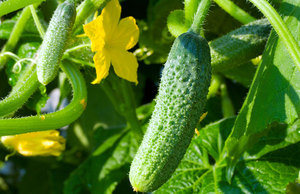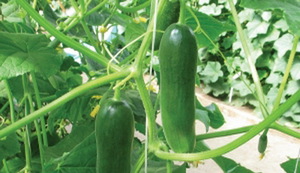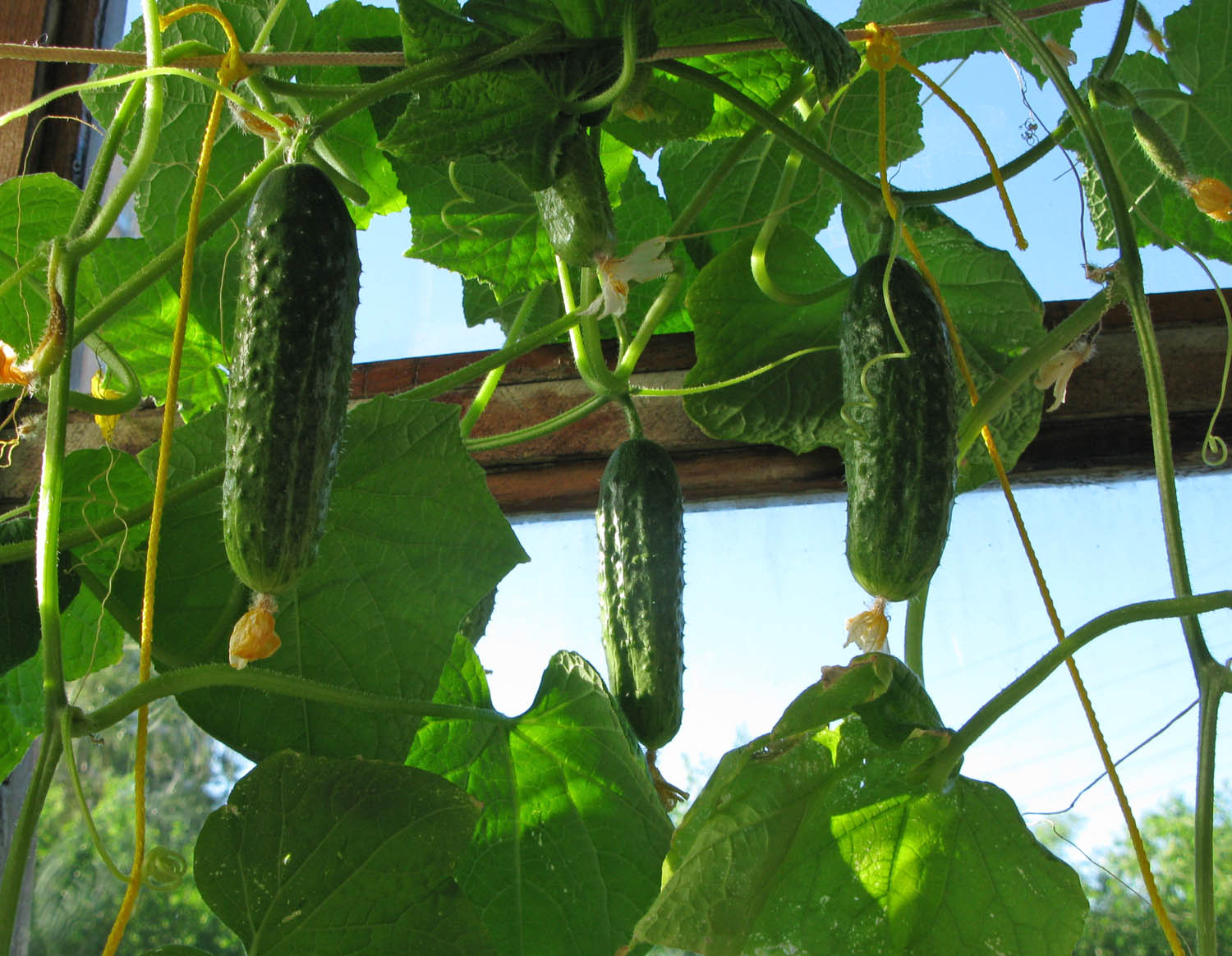Recently, when buying seeds, you can often see the inscription "parthenocarpic hybrid" on the package. Many people wonder what this concept means. Some gardeners claim that these are plants that self-pollinate. This is not true. Such plants produce fruits without pollination at all.
The concept of "parthenocarpic hybrid"
Customers at the seed shop often ask what a parthenocarpic hybrid means. When self-pollinating, a plant has both a pistil and a stamen, and it pollinates itself for the ovary of the fruit (for example, a tomato). In such a plant, the fruit has seeds. AND the fetus of the parthenocarpic hybrid has no seeds.
Such hybrids are convenient to grow in greenhouses, because insects do not fly there to pollinate flowers. Parthenocarpic cucumbers are most often grown.
Parthenocarpic cucumbers
Such cucumbers began to be grown quite recently, but they have already become very popular. Now varieties have been developed that can be planted not only in a greenhouse, but also in open ground. It was believed that parthenocarpic cucumbers, although very tasty, but unsuitable for conservation... At the moment, several parthenocarpic cucumber varieties have been bred, which can be salted in jars for the winter.
Advantages of the patrenocarpic cucumber hybrid
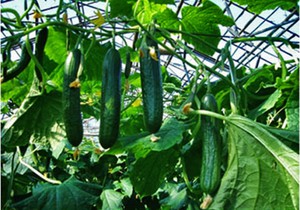 Constant fruiting.
Constant fruiting.- Rapid fruit growth.
- It tolerates all adverse weather conditions.
- The fruit tastes good without bitterness.
- They easily tolerate various diseases, and are generally immune to some.
- Does not need bee pollination.
- The cucumbers are smooth and evenly colored.
- Some varieties are great for pickling and pickling.
- The fruits are stored for a long time and can be transported over long distances.
- They never turn yellow when overripe.
Planting and caring for parthenocarpic cucumbers
It is best to plant this type of cucumber in a greenhouse. Some varieties, when planted in open ground, give crooked fruits.
Planting begins in early winter. into the soil, which, first of all, is recommended to warm up. Before planting, the seeds must be soaked in a special water solution saturated with useful trace elements. Then the seeds are thoroughly dried and placed in the soil no deeper than 2.5 cm. First, the seedlings germinate in peat cups.
As soon as the first shoots appear, you need to increase the amount of light. The air temperature should be at least +27 ⁰ C before the shoots appear, and after their germination, it must be lowered to +18 +23 ⁰ C. At night, the temperature should be reduced to +16 ⁰C. You need to water it with warm water using rain irrigation.
When the seedlings have at least 6 leaves, they can be transplanted into the ground, most often after the New Year holidays. After a couple of days, the shoots should be tied to the trellis, since the plant is already in height reaches about 30 cm... Side shoots should be periodically thinned and pinched. This is necessary in order for the bushes to have good growth conditions.
Common cucumbers are pinched along the main stem in the region of 5-6 leaves. This cannot be done with a parthenocarpic plant, since it is along the main stem that the flower ovaries are located. Therefore, pinching should be done on the shoots.
Caring for parthenocarpic cucumbers
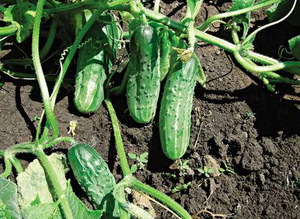 These hybrids grow best in medium loamy soil, which is well saturated with oxygen. It is favorable for good growth of cucumbers, so that cabbage, onions, peppers or potatoes grow in front of them in this soil. The plant needs constant weeding and watering. The soil periodically loosen... Watering cucumbers is best done immediately after sunset. A couple of times during the growing season, you need to feed the plant.
These hybrids grow best in medium loamy soil, which is well saturated with oxygen. It is favorable for good growth of cucumbers, so that cabbage, onions, peppers or potatoes grow in front of them in this soil. The plant needs constant weeding and watering. The soil periodically loosen... Watering cucumbers is best done immediately after sunset. A couple of times during the growing season, you need to feed the plant.
The harvest can be started 1.5 months after the seedlings emerge. You can harvest fruits 2-3 times a week.
Variety of varieties of parthenocarpic cucumbers
There are many varieties of hybrid cucumbers, each of which has its own characteristics and is good in its own way.
- F 1 Zozulya... One of the most commonly used varieties in the greenhouse. Refers to the female flowering type. After the seedlings emerge, after 40-45 days, you can already begin to harvest the fruits. The harvest is always good. The bushes have medium branching. Cucumbers never turn yellow, they have a bright emerald color. This variety is resistant to many diseases such as olive spot, powdery mildew, cucumber mosaic. The fruits are consumed only fresh, they are very good for making salads.
- F 1 April... The most common cultivar grown in spring greenhouses. Also has a medium branching of bushes, like Zozulya. The first fruits are removed 2 months after sowing the seeds. The harvest is abundant. The variety tolerates light frosts well.
- F 1 Angel... They are grown both in open ground and in greenhouses. They are classified as early-maturing hybrids. The fruits are small, about 11 cm. Such gherkins can be preserved, but they are tasty and not bitter when fresh.
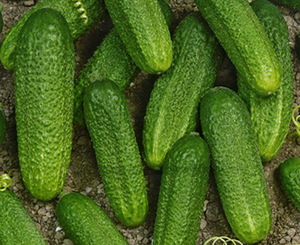 F 1 Regina-plus... The fruits ripen very quickly. From 1 square meter per month of fruiting, you can collect about 15 kg of cucumbers. This variety is great for pickling. Can be grown not only in greenhouses, but also outdoors. It branches weakly, therefore it does not need special care for the bush, does not require any special fasteners. It perfectly tolerates the most common diseases.
F 1 Regina-plus... The fruits ripen very quickly. From 1 square meter per month of fruiting, you can collect about 15 kg of cucumbers. This variety is great for pickling. Can be grown not only in greenhouses, but also outdoors. It branches weakly, therefore it does not need special care for the bush, does not require any special fasteners. It perfectly tolerates the most common diseases.- F 1 Arina... The peculiarity of this variety is that it does not need a lot of light, it is shade-tolerant. They are grown both in greenhouses and in open beds. The stems are highly branched, they need to be tied up. They tolerate cold well. Fruits are bright green with white thorns no more than 20 cm.
- F 1 Enthusiasm... The best variety of root type for pickling. Most often grown outdoors. Cucumbers grow up to 8-10 cm. It is immune to powdery mildew and root rot.
Don't be afraid to grow parthenocarpic hybrids. At first it seems that they require a lot of care... But this will not bother you very much, but everything is compensated by a plentiful harvest of very tasty fruits. In addition to parthenocarpic cucumbers, hybrid varieties have now been developed that do not require pollination and zucchini, and tomatoes and other vegetables.
